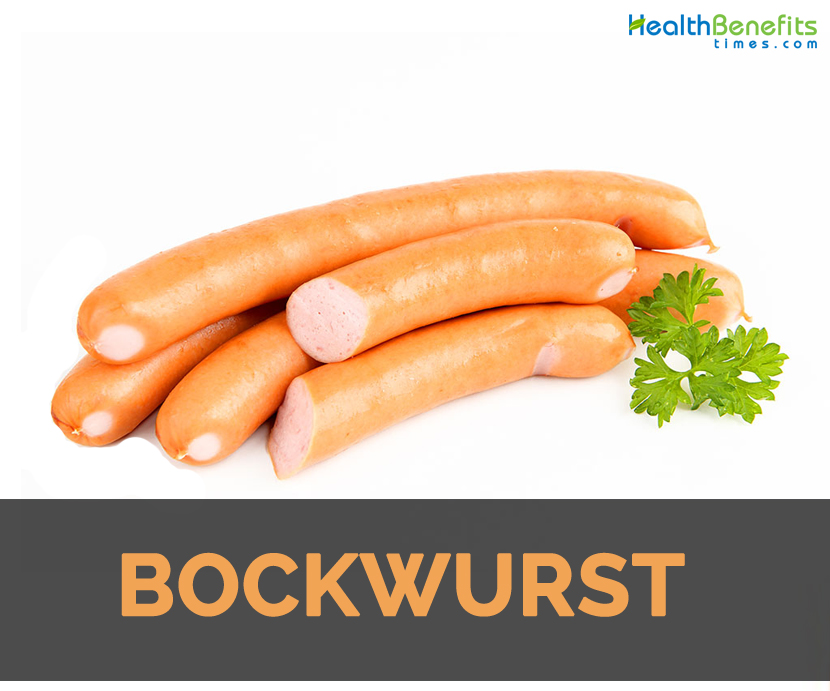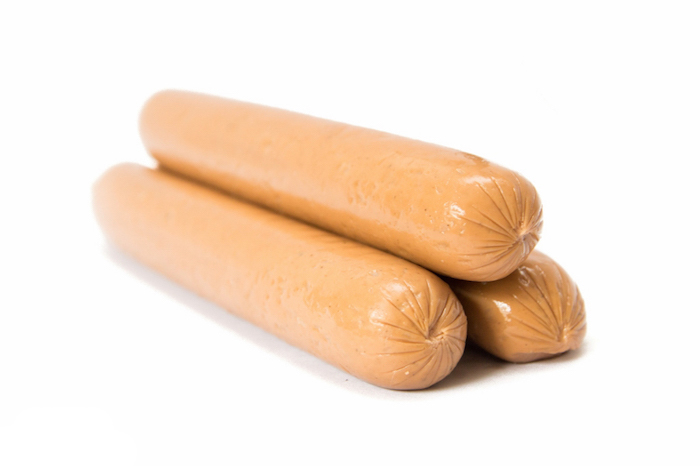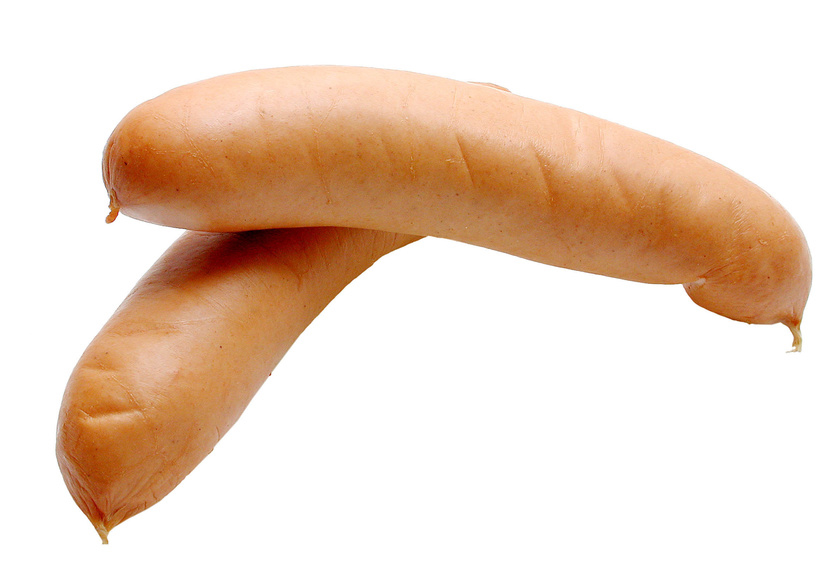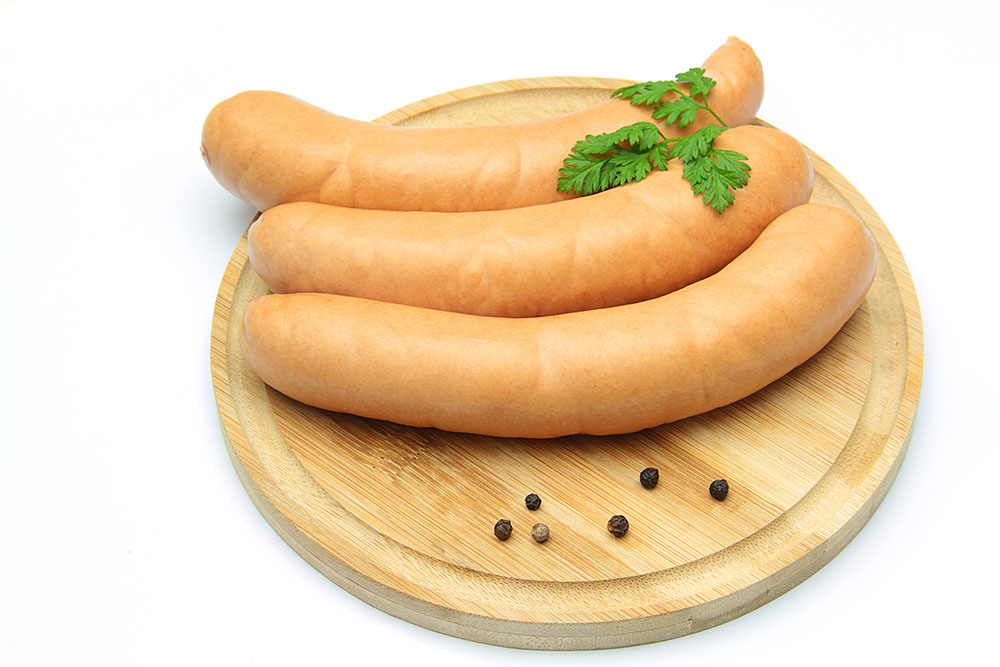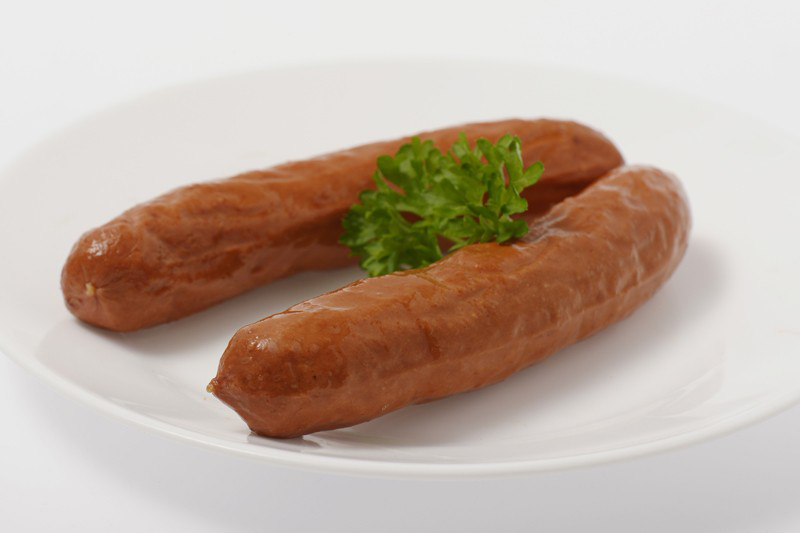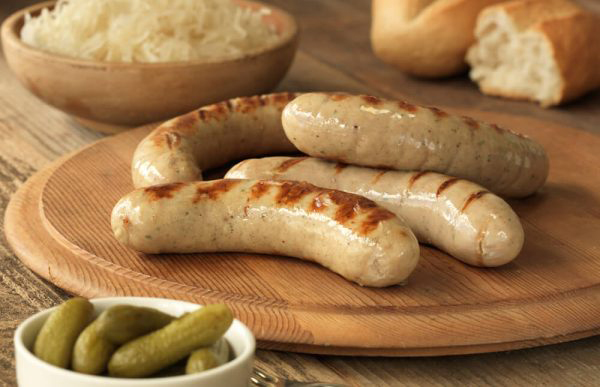History
Firstly, Bockwurst was mentioned in 1827 in Bavaria. However, in Berlin an urban legend claims that it was invented by a restaurant owner R. Scholtz of Berlin in 1889.
Second tale states that Bockwurst is Berlin invention. It was created in 1889 by a Friedrichstrasse butcher, Benjamin Loewenthal and Kneipe owner in Kreuzberg, Robert Scholtz. Loewenthal was insisted the Wurst be beef and veal not pork to be Kosher. Being served with Templehofer Bock (a dark beer), it was named Bockwurst. The term Bockwurst Scholtz spread from Southeast of Berlin to Germany.
How to make Bockwurst sausage?
Makes 2 pounds
Active time: 1 hour, including 30 minutes to chill meat
Start to finish: 1 ½ hours
VARIATION:
Substitute 2 pounds boned chicken or turkey thigh meat, with skin attached, for pork, veal, and pork fat. Cook sausages to an internal temperature of 165°F.
Ingredients:
- Medium hog sausage casings
- 3/4 pound pork butt or boneless country ribs
- 3/4 pound boneless veal shoulder or breast
- 1/2 pound pork fat
- 2 tablespoons unsalted butter
- 1 large leek, white part only, finely chopped and rinsed
- 1/2 cup whole milk
- 1 large egg yolk
- 3 tablespoons chopped fresh parsley
- 2 tablespoons chopped fresh chives
- 11/2 teaspoons kosher salt
- 1/2 teaspoon freshly ground white pepper
- 1/4 teaspoon ground mace
- 1/4 teaspoon ground ginger
Directions:
- Prepare sausage casings as directed.
- Cut pork, veal, and pork fat into 1-inch cubes. Place cubes on a sheet of plastic wrap on a plate and freeze for 30 minutes, or until very firm.
- While meats chill, heat butter in a small skillet over medium heat. Add leek, and cook over low heat, covered, stirring occasionally, for 10 minutes, or until soft. Set aside. Combine milk and egg yolk in a small mixing bowl, and whisk well.
- Grind meats and fat through the fine disk of a meat grinder, or in small batches in a food processor fitted with the steel blade using the on-and-off pulse button. If using a food processor, do not process into a paste, but ingredients should be very finely chopped.
- Combine ground meat, leeks, milk mixture, parsley, chives, salt, pepper, mace, and ginger in a mixing bowl, and knead mixture until well blended. Fry 1 tablespoon of mixture in a small skillet over medium-high heat. Taste and adjust seasoning, if necessary.
- Stuff mixture into casings as described and twists off into 5-inch links; prick air bubbles with a straight pin or skewer. If time permits, arrange links on a wire rack over a baking sheet and air-dry uncovered in the refrigerator for 1 day before cooking.
- To poach sausages, bring a large pot of salted water to a boil over high heat. Add sausages, and maintain water at a bare simmer. Cook sausages for 20 to 25 minutes, or until firm. Remove one sausage to a plate with tongs and insert an instant-read thermometer. If the temperature is 160°F, sausages are done. If not, return to the pot and continue cooking. Remove sausages from the pan with tongs, and serve immediately or cool to room temperature, lightly covered with plastic wrap, and refrigerate.
Note: Sausages can be refrigerated up to 2 days or frozen up to 2 months. Once cooked, they can be refrigerated up to 3 days.
How to Cook Bockwurst Sausage?
Boudin Blanc with Apples and Onions
Makes 4 to 6 servings
Active time: 20 minutes
Start to finish: 45 minutes
VARIATIONS:
Add 2 tablespoons Calvados or applejack brandy to sauce.
Ingredients:
- 3 tablespoons unsalted butter
- 1/4 cup olive oil, divided
- 2 large onions, diced
- Salt and freshly ground black pepper to taste
- 1 teaspoon sugar
- 1/2 teaspoon dried thyme
- 11/2 pounds Boudin Blanc, Bockwurst, or purchased fully-cooked sausages, cut into 1-inch pieces
- 2 Golden Delicious apples, peeled, cored, and cut into 1/2-inch slices
- 11/4 cups Chicken Stock or purchased low-sodium stock
- 1/2 cup heavy cream
Directions:
- Melt butter and 2 tablespoons oil in a large skillet over medium heat. Add onions, salt, pepper, and sugar, and toss to coat onions. Cover the skillet, and cook for 10 minutes, stirring occasionally. Uncover the skillet, add thyme, and cook over medium-high heat for 12 to 15 minutes, or until onions are medium brown, stirring occasionally and stirring browned bits from the skillet into the onions.
- While onions cook, heat remaining oil in another large skillet over medium-high heat. Add sausages and brown lightly on all sides. Remove the pan from the heat.
- Add apples and stock to onions, and bring to a boil. Simmer mixture over medium heat, uncovered, for 8 to 10 minutes, or until apples soften, stirring occasionally. Add cream, and cook for 2 minutes.
- Stir sausages into mixture to reheat, season to taste with salt and pepper, and serve immediately.
Note: The dish can be prepared up to 2 days in advance and refrigerated, tightly covered. Reheat it, covered, in a 350°F oven for 20 to 25 minutes, or over low heat, stirring occasionally, until hot.
References:
https://en.wikipedia.org/wiki/Bockwurst
https://www.chowhound.com/recipes/bockwurst-sausage-27643
https://www.meatsandsausages.com/sausage-recipes/bockwurst
https://www.epicurious.com/archive/holidays/oktoberfest/germansausagesbruceaidells
https://tastessence.com/common-types-of-german-sausages
http://parenting.firstcry.com/articles/eating-sausage-during-pregnancy-benefits-risks-and-recipes/
Comments
| Bockwurst sausage Quick Facts | |
|---|---|
| Name: | Bockwurst sausage |
| Taste | Mild |
| Calories | 274 Kcal./cup |
| Major nutrients | Total Fat (67.26%) Vitamin K (53.25%) Sodium (45.87%) Histidine (37.91%) Isoleucine (36.84%) |
| Name | Bockwurst sausage |
|---|---|
| Taste | Mild |
| Major Nutritions | Total Fat (lipid) 23.54 g (67.26%) Vitamin K (phylloquinone) 63.9 µg (53.25%) Sodium, Na 688 mg (45.87%) Histidine 0.467 g (37.91%) Isoleucine 0.616 g (36.84%) Valine 0.698 g (33.05%) Vitamin B-12 (Cobalamine) 0.78 µg (32.50%) Vitamin B3 (Niacin) 5.111 mg (31.94%) Lysine 1.061 g (31.73%) Threonine 0.558 g (31.70%) |
| Calories in 1 sausage (91 g) | 274 Kcal. |


